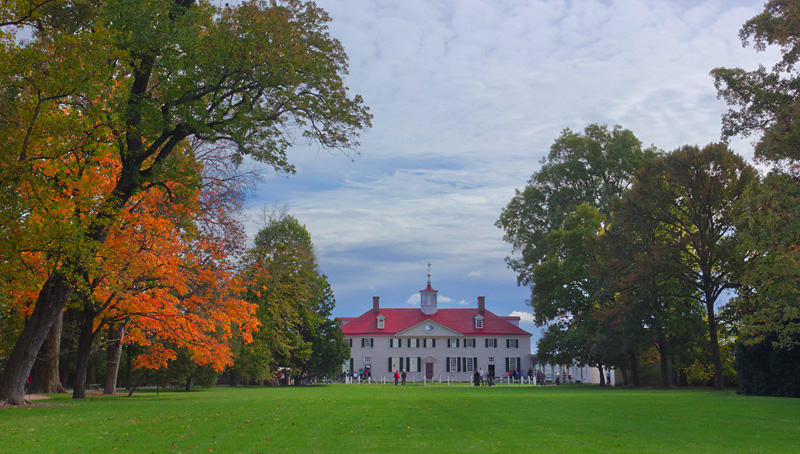
- Mount Vernon -
Home of George and Martha Washington
Alexandria, Virginia
Occupied by the Washingtons for over 40 years, this mansion was standing nearly empty by 1858, when it was purchased by the Mount Vernon Ladies Association. Since then, it has become the most popular historic estate in America, receiving over a million visitors every year. Although the estate was once much larger, containing four separate plantations, the property today consists of nearly 50 acres, including the mansion, many outbuildings (including a functioning greenhouse and a working blacksmith shop), pastures and forests, gardens, and a demonstration farm.
There's also a museum/education center, which is well worth your time - in fact, you'll want to reserve plenty of time, because that place is filled to the rafters with fascinating and well-crafted presentations about Washington's life and career: there's room after room of authentic artifacts on display, numerous films to be watched, and even amazingly convincing, life-size wax figures depicting Washington at various ages. I can confidently assert that you've never seen a facility where so much information is offered about the life of one man.

Above and below: the front facade of the house.
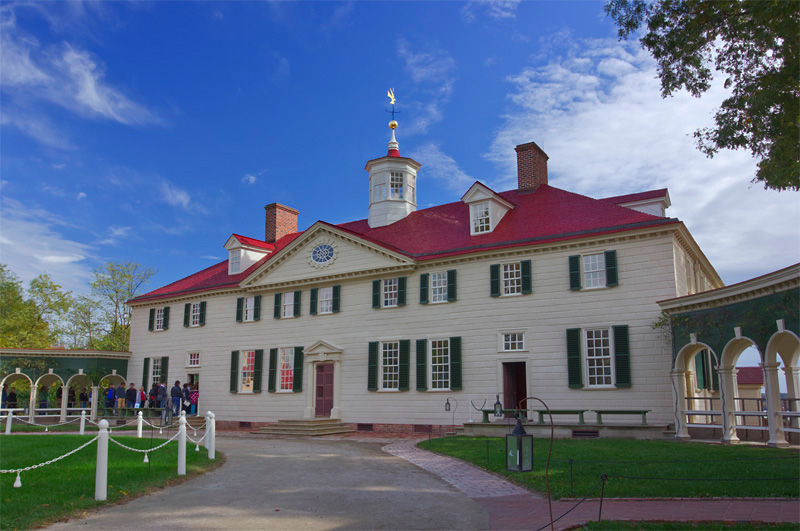
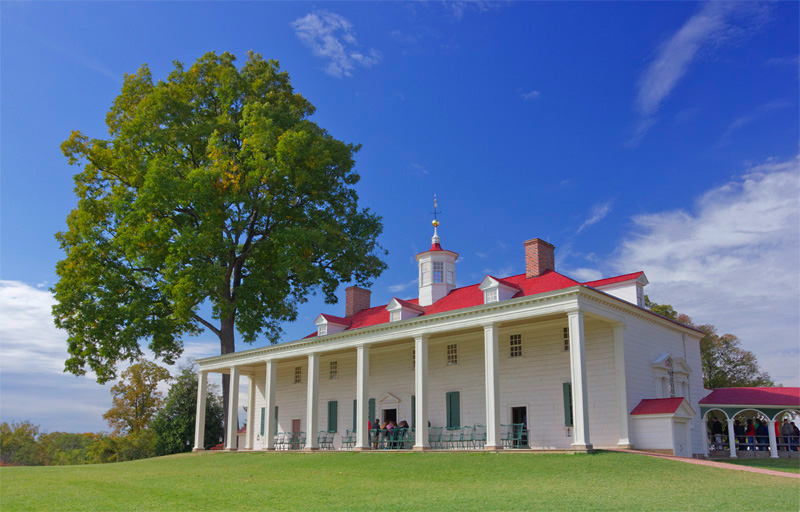
Above: the back of the house, which overlooks the Potomac River. Today, six miles of the Potomac's far shore (visible in the photo below) are managed as Piscataway Park, primarily to preserve the natural appearance of the view from Mount Vernon as it would have appeared in Washington's time:
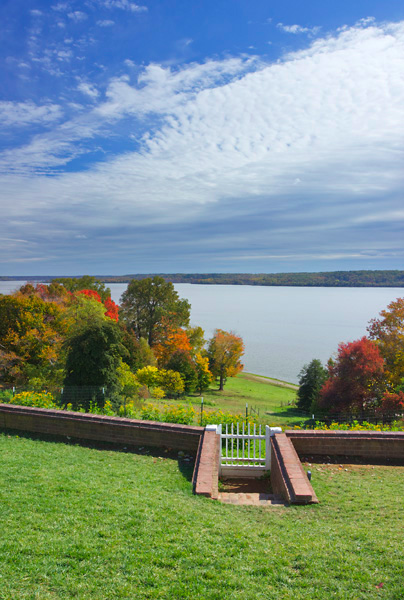

Above and below: the central cupola displays a weathervane representing a dove with an olive branch - after years of warfare, Washington chose to crown his home with this symbol of peace to communicate his hope for the future.

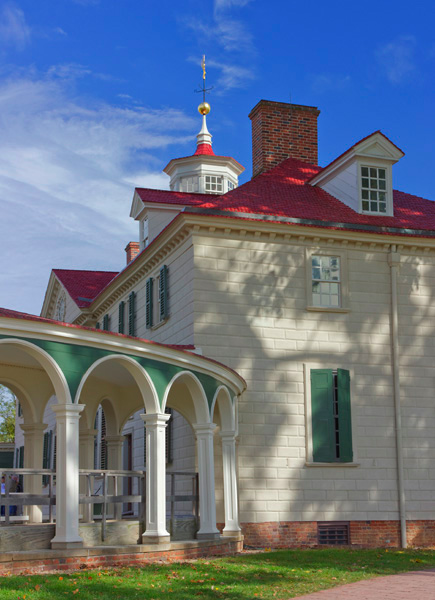
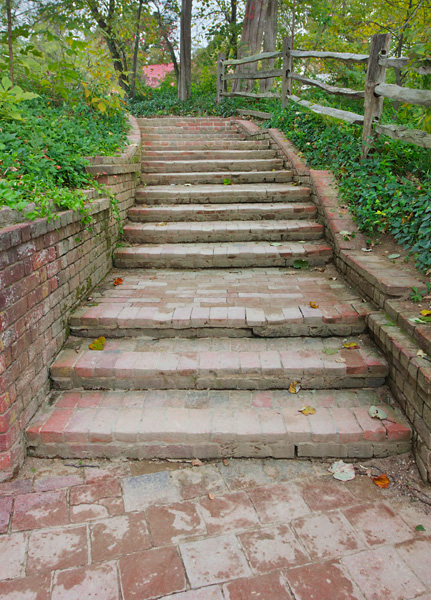
Above: these brick stairs lead to the "Old Tomb" where Washington was first laid to rest in 1799. Since the older structure was deteriorating, Washington had directed that a new tomb be constructed elsewhere on the property; his remains were removed to that location after 1831, along with those of his wife and other family (but I failed to get a good shot of the new tomb due to crowds of people there). Below, the door to the Old Tomb:
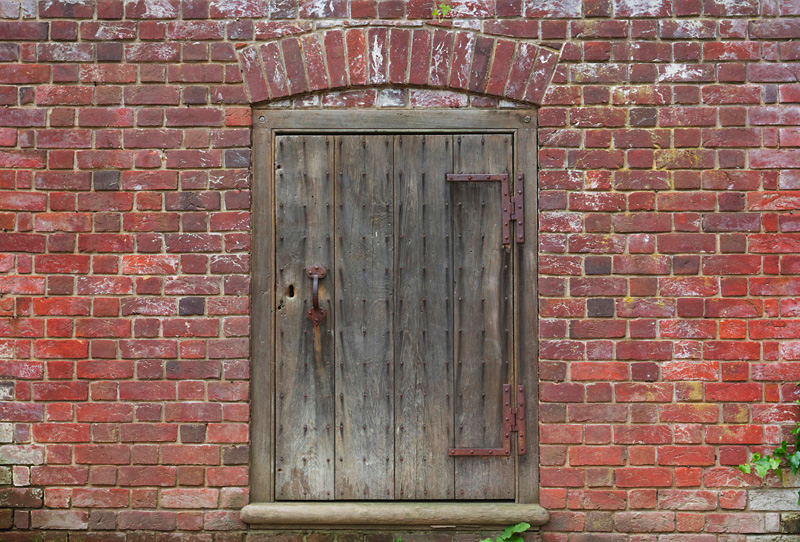
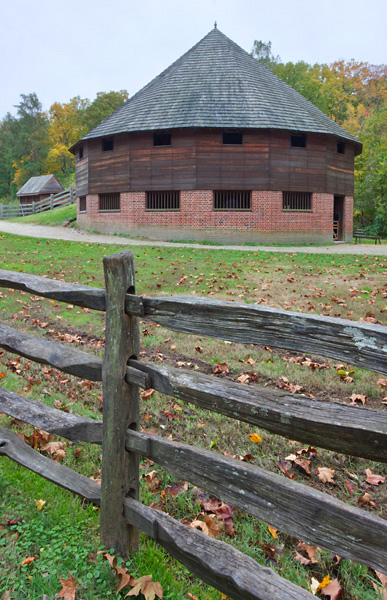
Above: the 16-sided Treading Barn that Washington invented in order to ease the difficult task of threshing wheat. The current structure is a reconstructed model carefully based on Washington's own drawings and plans. Although it was a swell idea, the design was never used outside of Washington's plantations because it was soon rendered obsolete by machines.
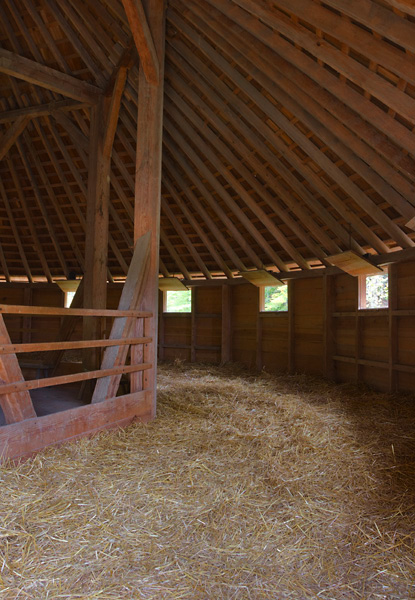
Above: the upper floor of the Treading Barn. Harvested wheat was piled on the floor of this circular building, and horses were led around and around the ring, stomping the wheat and separating the grain from the stem. The loose grains then slipped through narrow spaces between slats in the floor, allowing them to fall to the downstairs level, where they piled up and could be easily collected:
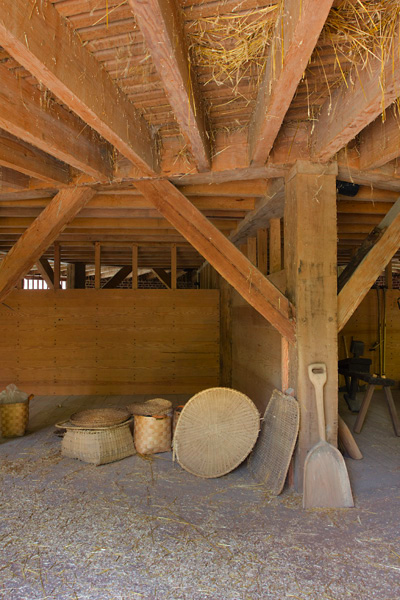
Below: Washington's greenhouse, which he added to the property in 1785 to grow plants as exotic as citrus trees and palms.
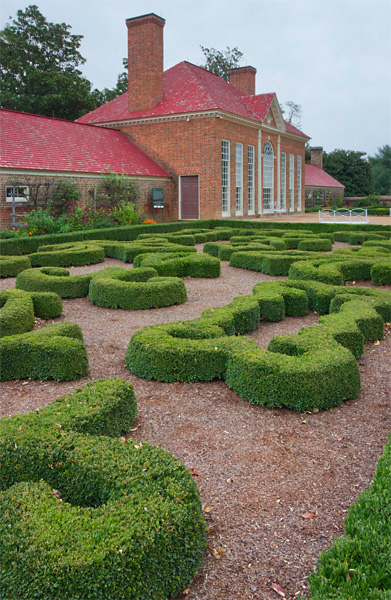
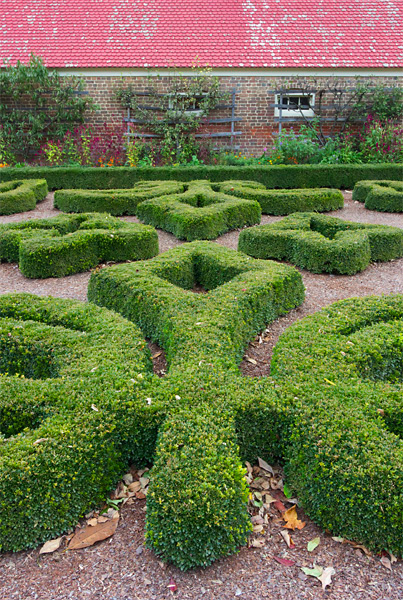
or